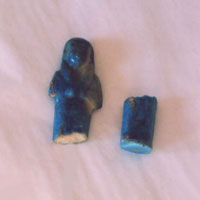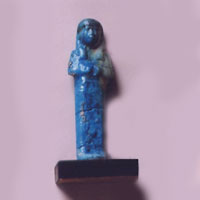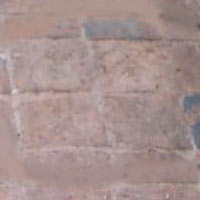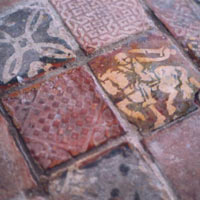Conservation
Conservation is essentially a process that involves preserving an object from further deterioration by stabilising its current condition and enhancing its aesthetic appearance. Sensitivity to maintenance of its historical significance is integral to this process.
Click on the images to enlarge them:
BEFORE |
AFTER |
 |
 |
|
| Egyptian Faience Shabti (Funeral Figurine) 1000-900BC |
Condition:
|
Previously broken in half. Bonded with shellac. Two firing cracks below glaze breakdown by dealkalination. Concretions from burial.
|
| Treatment: |
Removal of shellac. Consolidate brake. Bond with paraloid B72. |
| Historical significance: |
Around 4800 – 4300 BC in Egypt a gruesome practise of sacrificing slaves and burying them in the graves of their rulers, so they could perform work on their behalf in the afterlife was replaced with symbolic figures known as Shabtis. |
| Conservation: |
The firing cracks were produced at the time of manufacture so must be left without intervention. The burial concretions are proof of provenance and authenticity causing no further deterioration to the Shabtis. Cracks and concretions may be aesthetically imperfect, but unquestionably wrong to remove. |
|
|
BEFORE |
AFTER |
 |
 |
|
Impressed, interlaced, lead glaze medieval tiles 13th century. |
Condition:
|
Surface disfigured by ingrained and superficial dirt. Glaze very worn, in places gone completely. |
| Treatment: |
Hoover or brush dust. Clean using synperionic ‘n' 50-50 solution white spirit, water. Rinse clean water. Laponite poltice some area. Renaissance wax cover. Suggest protective covering. |
| Historical significance: |
In medieval times, around the 13th century, raised decorated lead glazed tiles were introduced to Britain. Following the dissolution of the monasteries in 1556 most complete floor tiles were destroyed. It's important to keep those that remain. |
| Conservation: |
Once the soft lead glaze has eroded, the pattern gradually becomes worn away until only a ghost of it remains. Simple conservation of cleaning, consolidating and protecting will preserve them. |
|



